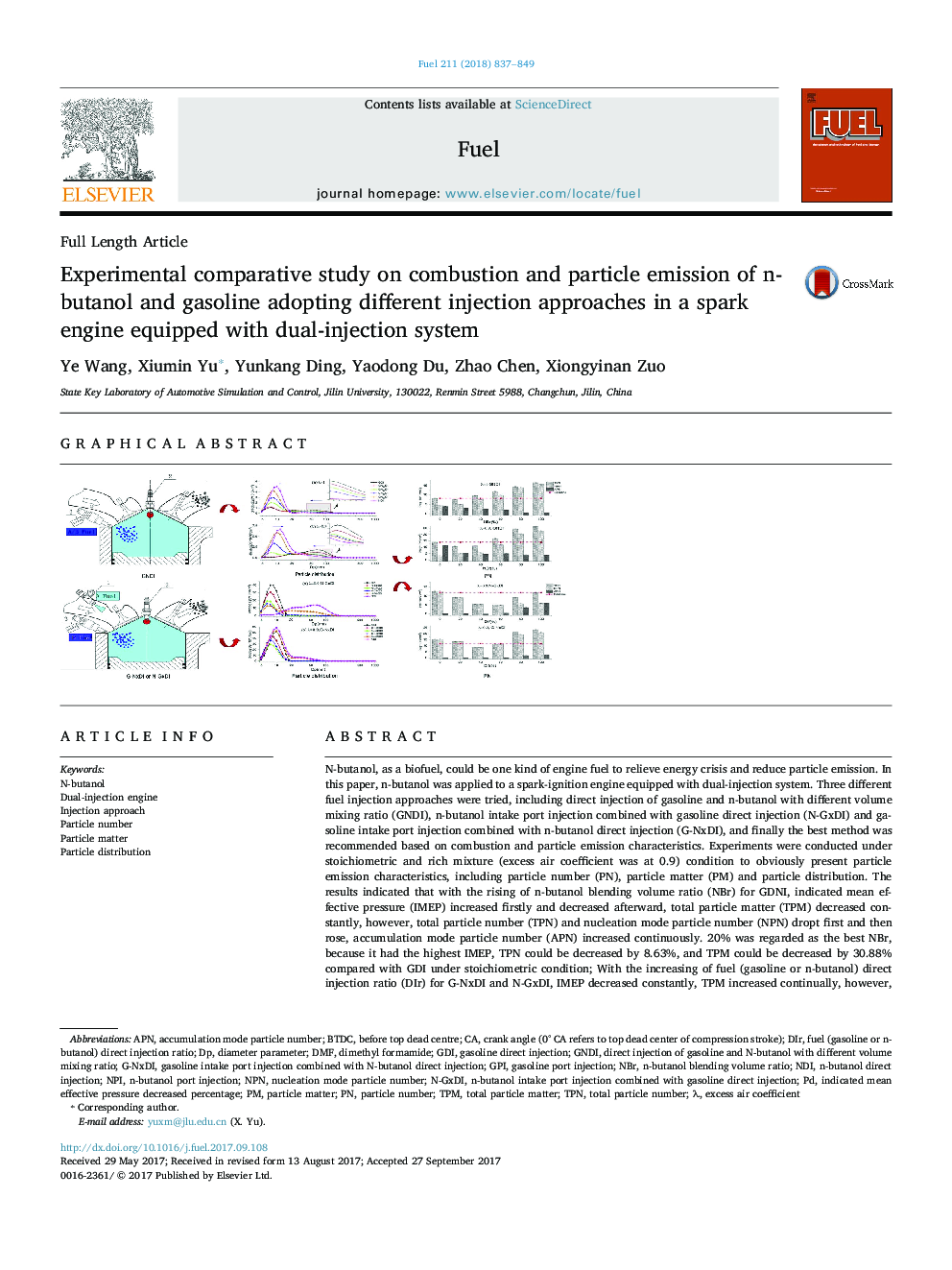| کد مقاله | کد نشریه | سال انتشار | مقاله انگلیسی | نسخه تمام متن |
|---|---|---|---|---|
| 6473630 | 1424953 | 2018 | 13 صفحه PDF | دانلود رایگان |

- Gasoline blended with n-butanol can reduce PN and increase IMEP of GDI engine.
- N-butanol-gasoline dual injection can effectively decrease PN compared with GDI.
- N-GxDI shows greater potential in reducing PN than G-NxDI, which owns higher IMEP.
- N-GxDI with 40% gasoline DI is the best method to control particle emission.
- Particle distribution is affected by n-butanol blended fraction for various methods.
N-butanol, as a biofuel, could be one kind of engine fuel to relieve energy crisis and reduce particle emission. In this paper, n-butanol was applied to a spark-ignition engine equipped with dual-injection system. Three different fuel injection approaches were tried, including direct injection of gasoline and n-butanol with different volume mixing ratio (GNDI), n-butanol intake port injection combined with gasoline direct injection (N-GxDI) and gasoline intake port injection combined with n-butanol direct injection (G-NxDI), and finally the best method was recommended based on combustion and particle emission characteristics. Experiments were conducted under stoichiometric and rich mixture (excess air coefficient was at 0.9) condition to obviously present particle emission characteristics, including particle number (PN), particle matter (PM) and particle distribution. The results indicated that with the rising of n-butanol blending volume ratio (NBr) for GDNI, indicated mean effective pressure (IMEP) increased firstly and decreased afterward, total particle matter (TPM) decreased constantly, however, total particle number (TPN) and nucleation mode particle number (NPN) dropt first and then rose, accumulation mode particle number (APN) increased continuously. 20% was regarded as the best NBr, because it had the highest IMEP, TPN could be decreased by 8.63%, and TPM could be decreased by 30.88% compared with GDI under stoichiometric condition; With the increasing of fuel (gasoline or n-butanol) direct injection ratio (DIr) for G-NxDI and N-GxDI, IMEP decreased constantly, TPM increased continually, however, TPN and NPN both decreased firstly and increased afterward, APN increased endlessly. There was also one best DIr to achieve the lowest TPN; Comparing three injection approaches, N-GxDI with 40% DIr was the best, because it owned the lowest TPN which was decreased by 51.07% and TPM could almost be ignored compared with GDI under stoichiometric condition. However, this approach had to sacrifice 1% decrease of IMEP compared with pure gasoline intake port injection, while the value was still above GDI.
343
Journal: Fuel - Volume 211, 1 January 2018, Pages 837-849